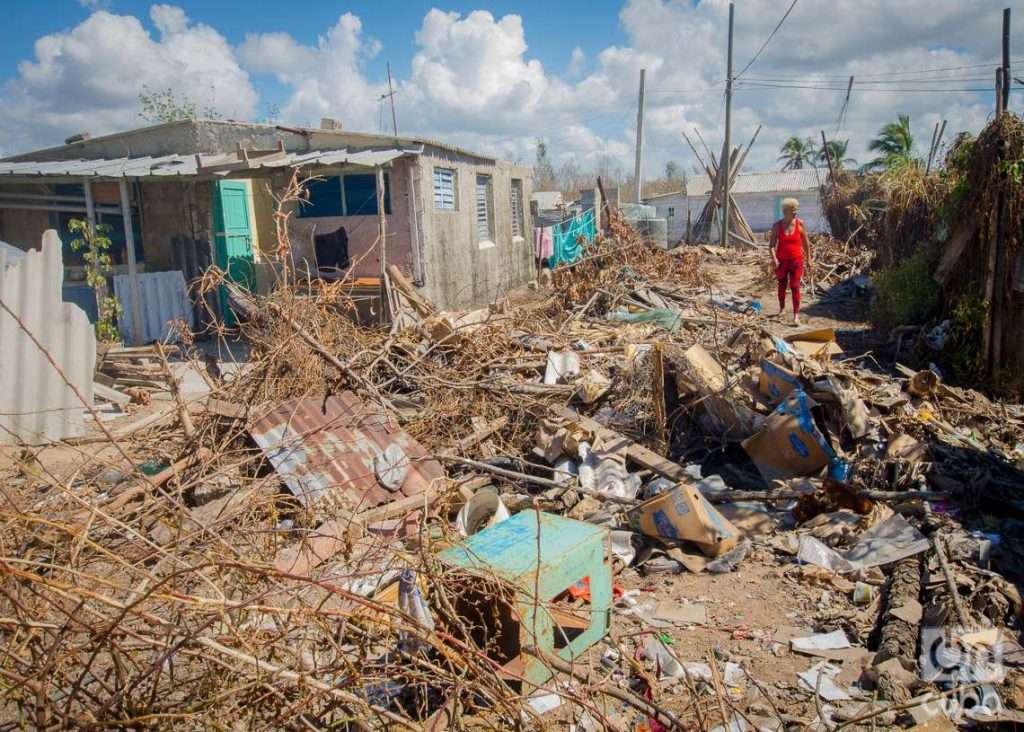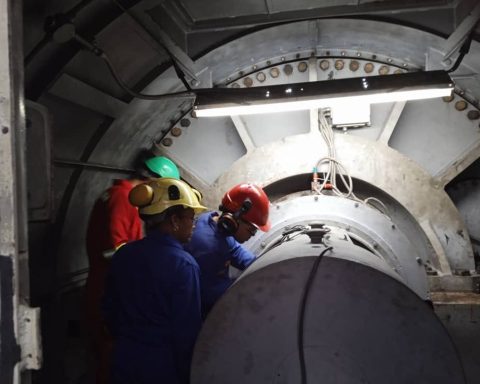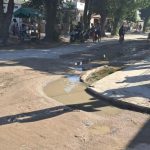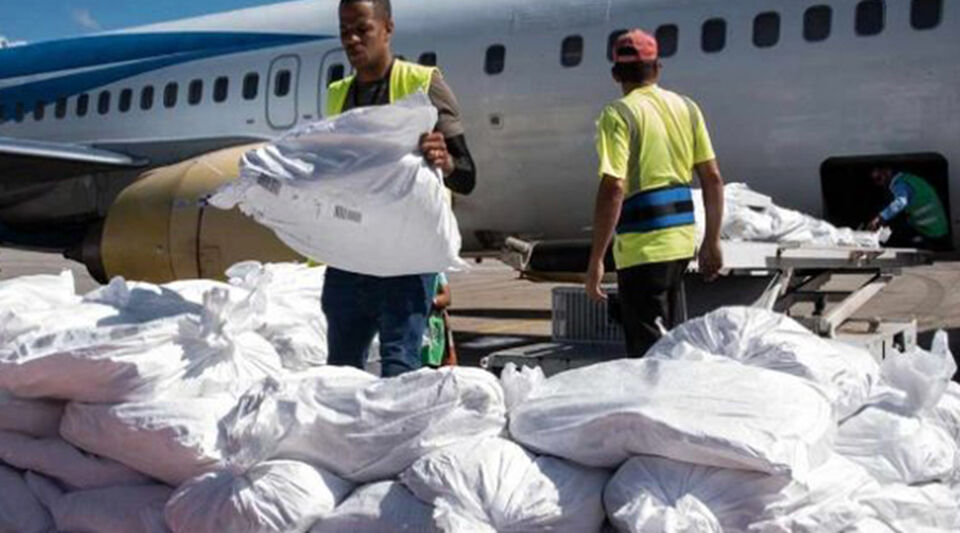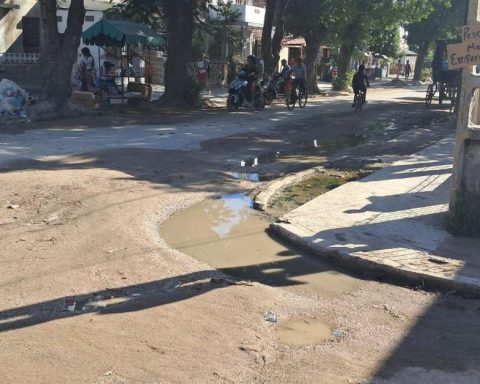At the beginning of October, the journalist Fernando Ravsberg he asked himself on Facebook for a “new design for tobacco drying houses” about which in 2013 the newspaper Granma had published a note. At that time, the project already had the endorsement of the Pinar del Río tobacco management and its first five prototypes had been built, with acceptance among farmers from municipalities such as San Juan and Martínez, the main producer of the leaf in Cuba.
Although the new buildings provided a greater volume of storage, their great advantage lay in their ability to withstand strong winds, based on a structure that referred to the well-known “rod on the ground”: the new houses were 30% lower and a 40% wider than the traditional model.
The information of Granma It concluded with a fundamental background: at least once a decade, hurricanes devastate the tobacco curing houses of Pinar del Río, forcing the mobilization of “carpenters from all over the country and numerous resources” to recover them. In 2008 alone, cyclones Gustav and Ike had left 7,000 of these buildings on the ground.
Fourteen years later, the Uruguayan journalist was assailed by doubts as to whether that proposal had not worked or, simply, had never been put into practice. After Hurricane Ian passed through the westernmost province of Cuba, the Ministry of Agriculture reported that barely 8% of the tobacco curing houses in Pinar del Río were still standing. Of the 11,750 quantified affected, 10,125 had been completely destroyed.
The unfulfilled “anticyclonic” strategy
On August 30, 2008, in the Pinar del Río town of Paso Real de San Diego, the measuring instruments became useless when they marked a gust of 340 kilometers per hour, caused by Hurricane Gustav. A few months later, the World Meteorological Organization would grant that record the status of “world record” between the gusts of wind that occurred during the passage of tropical hurricanes.
Specialists have been warning for some time about the possibility that such devastating storms are becoming more and more common. A abstract published by NASA in June of this year predicts “stronger and wetter hurricanes for the coming years” due to “excess heat”, a consequence of climate change. In recent decades, Atlantic hurricanes have reduced their travel speeds by an average of 17%, with which the rainfall they cause has increased by 25%.
In Cuba, the “terrible year” —2008, in which hurricanes Gustav, Ike and Paloma devastated provinces of the three regions of the island— seemed to have anticipated the alarms regarding the issue. Along with improvements in agriculture, the Government’s anti-cyclone strategy concentrated its efforts in three areas: the creation of local electricity generation systems, the construction of houses resistant to medium and high intensity hurricanes, and the resettlement of vulnerable communities.
The first of these projects was the one that showed the greatest progress. In January 2006, Pinar del Río had become the first province to complete its network of generator sets. In theory, this should allow it to function as an “island” in case of meteorological contingencies such as those that disconnected it from time to time from the rest of the country, or cut the links between its municipalities. “Regardless of the national supply, 164,000 kilowatt hours of new generating capacity support the provincial service and support the national service as often as required. There may be a power failure due to a tree that falls into the distribution network, a transformer that is affected for any reason […] an electrical job that requires a power outage, a hurricane [que] forces to turn off the lights, as soon as the wind blows to more than 70 […] but not due to a lack of fluid in the system, something that has been constantly happening in recent times”, had assured Fidel Castro inaugurating the diesel generation site that completed the provincial network.
In the following decade, the country replicated this scheme throughout its geography, benefiting from its functionality in the face of contingencies such as those caused by hurricanes Sandy and Irma, in 2012 and 2017. But the aging of the generator sets and the lack of spare parts and Adequate maintenance has rendered inoperative most of the large batteries and many of the generators installed in production or service centers. The part of the Electric Union of this October 14 estimated at 1,750 megawatts / hour (MWh) the distributed generation capacities “unavailable due to breakdown” or maintenance, for peak hours the diesel engines were able to generate just 100 MWh.
The recent experience in Pinar del Río it ended up confirming the validity of distributed generation, especially in municipalities without the possibility of being reconnected to the national electricity system in a short time. He also ratified the conviction that only masonry houses, with “rigid roofs”, are capable of withstanding the ravages of a hurricane of a certain magnitude.
This was already thought in the mid-2000s, when the trimax ceilings. Using polyfoam panels, electro-welded mesh and small amounts of rebar and concrete, this technology allows the construction of ceilings similar to a traditional plate, capable of serving as mezzanines for a multi-storey building. All this with less consumption of materials and without using formwork or cranes. Around 2009 provinces like Villa Clara they pushed a hurricane-resistant housing program, which in that year reached 75% of the 1,600 houses that would be built in the territory. The basic requirement of the new typology was to have concrete roofs.
Following the same premise, as of 2008 in Pinar del Río thousands of Trimax ceilings were installed, as well as prefabricated and traditional plates. Even the petrocasa modules donated by Venezuela underwent modifications, substituting In some settlements, the zinc plates contemplated in the original project were replaced by Trimax panels, with the aim of multiplying their resistance. The shared conviction was that metal or asbestos-cement tiles (a material, moreover, carcinogenic) could only be considered a temporary solution.
According to the Cuban Wind Standard, issued in 2003, the territory between Pinar del Río and Villa Clara constitutes the so-called Zone I, in which the effects of this climatic element are more marked and there is a greater recurrence of hurricanes. The “basic characteristic wind pressure” there is 15% higher than that calculated for Zone II (from Sancti Spíritus to Camagüey) and almost 31% higher than in Zone III (from Las Tunas to Guantánamo).
A update of the Standard presented in 2011 by engineers Carlos Llanes Burón and René Blanco Heredia, professors at the Technological University of Havana and the University of Matanzas, respectively, proposed adding the impact of the sea to the regional conditioning factors. His recommendation was to extend the land categorized as a coastal strip from the 0.5 kilometers established in the Standard to 20 kilometers inland from the south coast and 10 kilometers on the north slope. They also indicated recalculating the variables for hurricanes of categories IV and V on the Saffir-Simpson scale, considering that these meteors are increasingly common and destructive. According to his estimates, the new buildings should be designed with the capacity to withstand winds of at least 209 kilometers per hour. Such a degree of strength can only be achieved with masonry and reinforced concrete structures.
in various notes OnCuba he has outlined the country’s difficulties in sustaining its housing construction program; in particular, for the drop in production national cement As a contingency solution, the authorities have promoted the use of palm wood and other local materials, but these alternatives are not enough to solve the housing needs accumulated over decades. Nor to deal with the damage left by the hurricanes, which before Ian they estimated in around 60,000 total landslides and more than 140,000 minor damages. That, without taking into account the communities vulnerable to climate change, which the State Task Life plan deemed it necessary to move to safer areas.
Thirteen communities, including several on the southern coast of Pinar del Río, Artemisa and Mayabeque, top the list. Among these is Guanimar Beach, a spa in Artemisa that ten days after Ian’s passage continued to have a flooded road as its only access route. The damage caused there by the hurricane was dramatic. Since the beginning of this century its inhabitants have been in the same trance at least four times, due to hurricanes that have carried the waters up to two kilometers inland. What the flood has not destroyed has been carried away by the winds, forcing reconstructions that have been lost again in a few years.
The solution would be to evacuate the town, resettling the Guanimareños beyond the flood level. But doing so implies an unthinkable investment in these times. Thus, until the next storm once again highlights the vulnerability of the enclave, and how opportune it would have been to bet on definitive solutions. As in the case of the “anti-cyclonic” nursing homes, which were once outlined as a remedy to the Achilles’ heel of tobacco farming in Pinar del Río; although when Ian passed through that territory they could not prove it.
